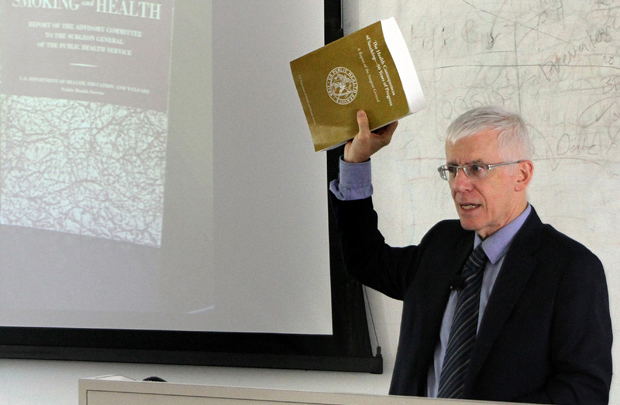When the first report from the United States Surgeon General on smoking was released in 1964, it was held until a Saturday over fear that the information might lead to a stock market crash.
Jonathan Samet, MD, MS, chair of the Department of Preventive Medicine at the Keck School of Medicine of USC, who recently gave a lecture on 50 years of Surgeon General reports on smoking, pointed out this fact to indicate how much has changed since the Surgeon General first declared smoking hazardous and linked it to lung cancer, chronic bronchitis and coronary artery disease.
At the time, 43 percent of adult Americans were smokers and there was significant disagreement about the danger of smoking. Since then, the Surgeons General have produced 33 reports on smoking, making it one of the most studied public health issues.
“We continue to expand the list of diseases associated with smoking,” said Samet, the senior scientific editor of the recently released 50 Years of Progress: A Report of the Surgeon General, 2014. He noted that the 2014 report found links between smoking and rheumatoid arthritis, macular degeneration, diabetes, periodontitis and erectile dysfunction.
Samet added that the reports are some of the best examples of rigorous scientific reviews laying the groundwork for public policy. They have looked at every aspect of smoking including involuntary smoking, nicotine addiction and the marketing of tobacco products to young people.
All of this work has led, he noted, to important policy changes including smoking bans in public places and the banning of cigarette advertising on television and radio. Public understanding of the health risks lead to a decline in the number of U.S. smokers, currently 18 percent of Americans.
In spite of the progress, Samet warned that there is still more to be done. One concern in the near future is the rise of e-cigarettes and whether they will entice more people to take up smoking. Samet added there are still strategies that can be employed, such as forcing tobacco companies to reduce the nicotine content of cigarettes or raising prices, to help put an end to this “ongoing epidemic.”
— Hope Hamashige


